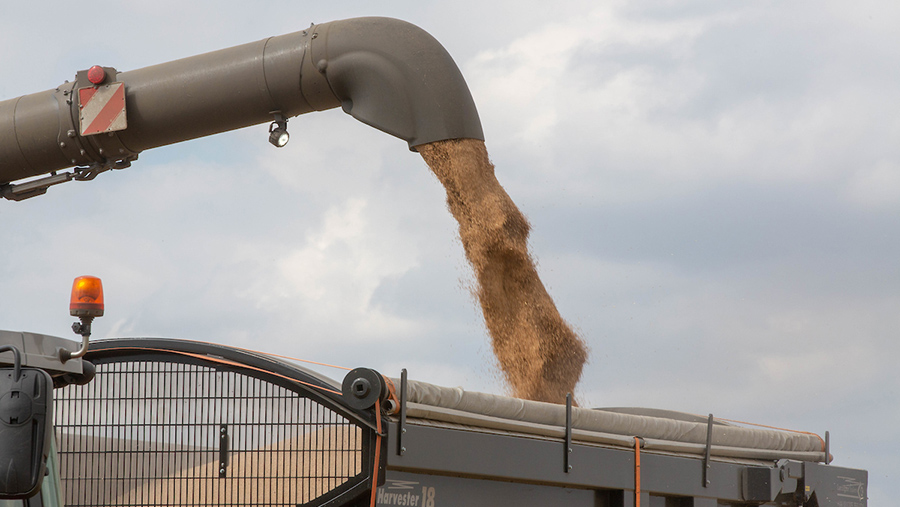Grain prices drop on pound’s recovery and poor fiscal outlook
 © Tim Scrivener
© Tim Scrivener Grain prices dropped with the recovery of the pound after the reversal of many of the government’s mini Budget measures.
In the six trading days between 10 October and 18 October, the London feed wheat futures contract lost more than £28/t, dropping from £293.20/t to £265/t. Midweek, it sat at £265/t, just £1/t above the November 2023 contract.
Ex-farm spot prices collected by Farmers Weekly midweek ranged from £253/t to £264/t for feed wheat (average £256/t) and £233/t to £240/t for feed barley (average £236.6/t).
The US Department of Agriculture’s 12 October world supply-and-demand estimate prompted a lift in soya bean prices, but little change for wheat and maize.
See also: Q&A – 6 most common farm access and boundaries disputes
UK grain is export-competitive but struggling against cheaper maize and relatively slow demand at home. The latest HMRC data show that UK wheat exports in July and August were at 110,800t, compared with 81,000t during the same period last year.
An important factor in grain pricing is the growing nervousness about demand in the few weeks running up to Christmas, when food manufacturers are ramping up production.
Falling oil prices have added to the recent downward pressure, with the US reportedly planning to release fuel from strategic reserves to dampen pump fuel prices. However, the market remains very difficult to call and could spring back just as easily, say traders.
Slow milling demand
Price and cash considerations, along with an uncertain outlook for retail and hospitality, are making for a slow milling trade, with buyers relatively well covered this side of Christmas, and some into February.
High energy, haulage and labour costs, alongside increased interest rates and high working capital demands, are making many businesses cautious about holding stocks. This also applies in the feed trade.
Aside from high prices dampening feed demand generally, the growing number of avian flu cases and the high level of culling is making for a depressed feed demand outlook for this sector.
Ian Webster, trading director at Norfolk-based Dewing Grain, said it was very difficult to sell physical wheat at present.
With only a £6/t carry between November and May, growers would rather have the cash now, but there were limited homes for it.
“It’s a very difficult market to call, volatility is still extreme. The pound is now stronger than before the mini Budget,” he said.
Mr Webster estimated growers were about 60% sold on the 2022 wheat crop – higher than on average.
There had been interest in 2023 sales, worth about £240/t for harvest, with some growers committing about 20% of their expected crop.
Black Sea grain agreement
The corridor negotiated to allow export of grain from the Black Sea region ends on 19 November.
Analyst CRM AgriCommodities said that talks on the renewal of the agreement were tentatively being assessed as positive, with a UN spokesman describing the talks as positive and constructive.
